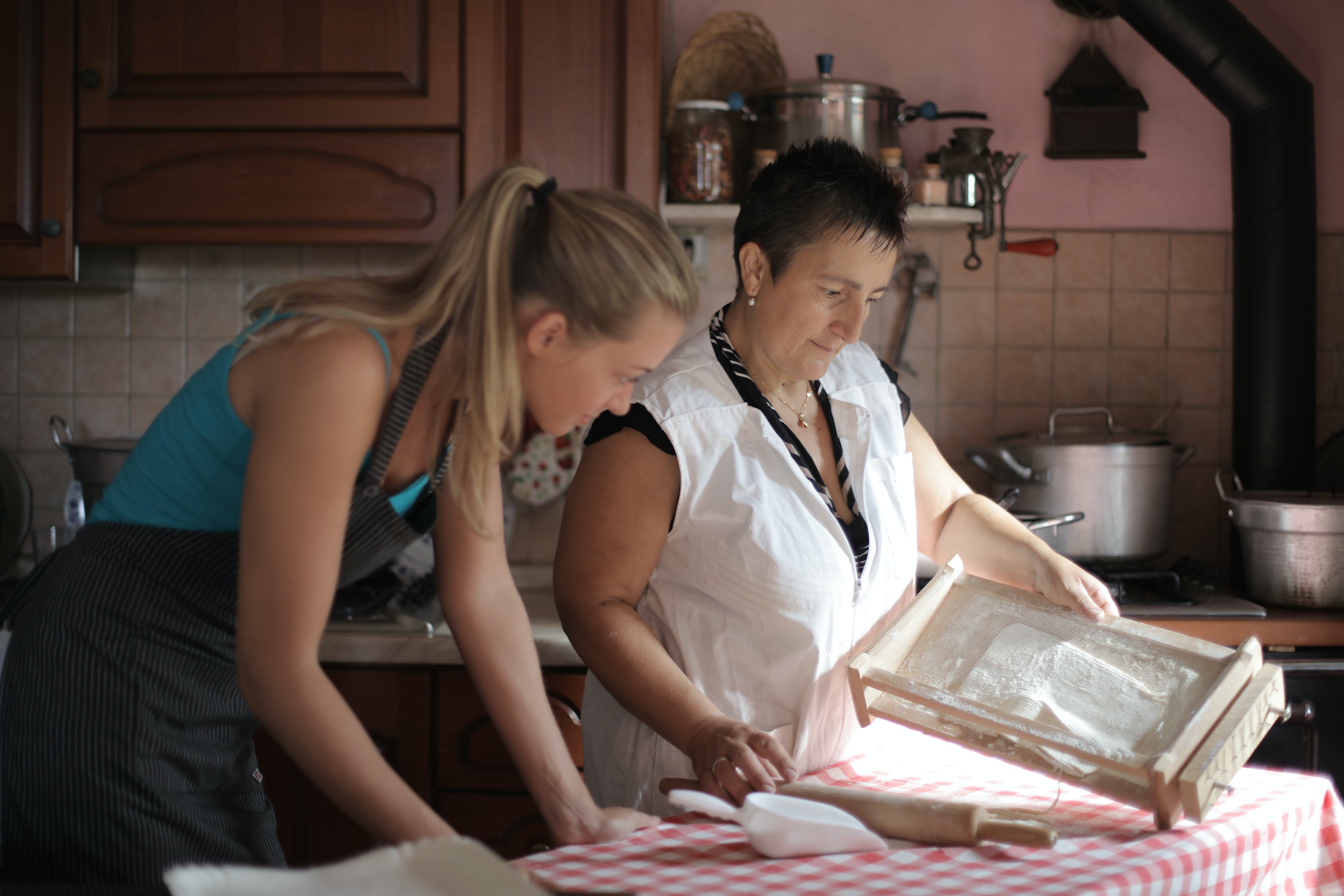
Reunification Therapy For Divorce: Repairing Parent-Child Relationships
Even when divorce is the right choice for a couple, it’s almost always difficult for any children involved.
Contentious divorce proceedings and custody arrangements, in particular, can damage the relationship between a parent and child, leading to behavior problems, communication difficulties, and in some cases, parental alienation.
Parents struggling with their relationship with their children after divorce may consider reunification therapy to help repair family bonds and create a blueprint for a healthier dynamic.
What is Reunification Therapy?
Reunification therapy is an intervention that aims to improve or reestablish the relationship between members of a family, usually parents and children. Therapy may focus on attachment, improving communication, and building trust between parents and children.
While reunification therapy is a modality we may see recommended during or after a divorce, it can be appropriate for other familial contexts too, including in support of children who are runaways, as well as homes where Child Protective Services (CPS) has intervened, to ensure that the home environment is safe and secure for their return.
A family may enter into reunification therapy voluntarily, or a court may order it. There are several reasons reunification therapy may be court-ordered, including:
- Parent-child estrangement: In a contentious divorce, one or both parents may try to manipulate the other by preventing them from seeing the child or moving away without notifying them or without their consent. A judge may mandate therapy to help foster a relationship between the alienated parent and the child or between both parents and the child.
- Challenges with custody arrangements and enforcing visitation: If a child isn’t sticking to a custodial arrangement, such as refusing to spend weekends with one parent, a court may order reunification therapy to help them feel more comfortable visiting the parent who doesn’t have primary custody.
- After court-ordered therapy or incarceration: If a parent was found guilty of domestic abuse or another crime, a judge may order reunification therapy after the parent has completed court-ordered therapy or prison time.
No matter the reason for getting started, the focus of reunification therapy is on the well-being of the child or children.
What are the steps in Reunification Therapy?
Reunification therapy will look different for each family, but generally includes the following steps:
1. Assessment and rapport-building
During the initial assessment, a therapist will ask questions to understand the cause of estrangement, the needs of each family member, and relevant background information, such as any financial struggles. Depending on the situation and court order, if there is one, the assessment may include a home study.
Throughout the assessment, the therapist will also begin building a relationship and rapport with clients. When therapy isn’t entered into voluntarily, this can be challenging, but a skilled therapist can ensure both parents and children feel considered.
“The interview and assessment are vital for appropriate evaluation and treatment planning,” says Dameon Clay, MA, LMHC, of Silver Lining Counseling Services in Tampa, FL. “It’s extremely important that all parties involved feel that they are being heard in the process — though this does not mean that they need to agree with what is transpiring.”
2. Exploring family history
Next, the therapist may talk to each family member about specific memories and experiences, including unresolved conflicts, communication difficulties, and behavioral challenges.
3. Rebuilding trust
Reestablishing trust is an essential part of reunification therapy, but can be one of the most challenging pieces to solve. For example, a child or teen may that their relationship with their parent wasn’t positive before or during the divorce. They may feel resistant if they believe the goal of therapy is to bring back an earlier dynamic.
“For my teenagers, one misconception is that reunification means ‘going back to the way things were,’ which can be scary if the past was not a good place to return to,” says Pilar Coppers, LCSW, of Foothills Mental Health Services in San Andreas, CA, who specializes in working with runaways and CPS-involved families. “It is also difficult then to imagine a positive future if all you have known are negatives.”
4. Reviewing progress/setting goals
Overall, the goals of reunification therapy revolve around improving the relationship between parent and child and helping the child adjust after a divorce. A court mandate may include specific steps and goals for reunification therapy.
In these cases, Coppers says she may work individually with a child or teen to help them develop a vision of a more positive relationship.
Depending on the family, progress can look like restoring contact between a parent and child, improving each parent’s parenting and family communication skills, or forming more appropriate parent-parent and parent-child boundaries and roles.
Therapeutic approaches for Reunification
Therapists may take a variety of approaches to reunification therapy, depending on the age of the children involved and the family’s background, needs, and goals. A therapist may use one or multiple approaches in the course of therapy. Here are just a few of the approaches a therapist may take:
Parent-Child Interaction Therapy (PCIT)
PCIT is a structured, evidence-based approach recommended for children between the ages of two and seven who struggle with following directions and disruptive behavior. During play, the therapist will observe the parent directly and offer coaching in the moment to help the parent develop better approaches to managing tantrums and aggression.
If harsh parenting has contributed to child-parent estrangement, PCIT may be an effective approach.
Cognitive Behavioral Therapy (CBT)
In CBT, therapists work with parents and children to help them identify and change unhelpful thought patterns and behaviors that may be contributing to their strained relationship. CBT can be an effective approach for both adults and children.
Play Therapy
In play therapy, a therapist uses toys and imaginative situations to help children explore and process their feelings. Playing a game together can also help children and parents form more positive interactions and memories, contributing to an improved relationship.
Eye Movement Desensitization and Reprocessing (EMDR)
EDMR is a form of psychotherapy that aims to alleviate the distress associated with traumatic memories. In this approach, a client focuses on a traumatic memory while following a therapist’s hand motions with their eyes. Over the course of the session, the therapist guides the client to more pleasant thoughts and memories. EDMR may be an option for adolescents as part of reunification therapy.
Psychodynamic Therapy
Psychodynamic therapy is a form of talk therapy that helps clients explore their past to understand their current challenges. This approach focuses on the underlying source of symptoms and challenging behaviors and may help older children learn to express their emotions through words, rather than only through actions.
Tips for finding a Reunification therapist
Psychologists, licensed social workers, and other mental health professionals can provide reunification therapy. Here are a few considerations to keep in mind when starting your search:
Consider telehealth
Telehealth gives you access to therapists who are in your state but may be too far to meet in person. Virtual care can also be less disruptive to school and activity schedules because you can conduct sessions from home.
Review specializations
Look for therapists who specialize in family or children’s therapy. If your child is also managing a diagnosis like ADHD or experiencing behavioral issues, you can also look for a therapist who specializes in these areas. For those pursuing reunification therapy because of a court order, you may want to search for therapists with experience working within the legal system.
Schedule a consultation
When you schedule a consultation with a potential therapist, include your child, too, to make sure they’re comfortable with whichever therapist you choose.
Take action:
Find your therapist with Alma
Alma makes it easy to find a therapist, see what insurance they accept, and schedule an initial consultation.
With Alma, you can search for a therapist who meets the needs of you and your family. You can search for therapists by therapeutic approach, like cognitive and behavioral therapies, trauma-focused therapies, and structural family therapy, and by specialty, such as family relationships and parenting.
You can also search for therapists who specialize in working with young children by selecting “more filters” and “ages served” on Alma’s provider search page.
Alma partners with several insurance companies to help clients find providers in-network. Or, learn about paying for therapy without insurance.
Dec 28, 2023

Looking for a therapist?
Get tips on finding a therapist who gets you.
By submitting this form, you are agreeing to Alma's privacy policy.



